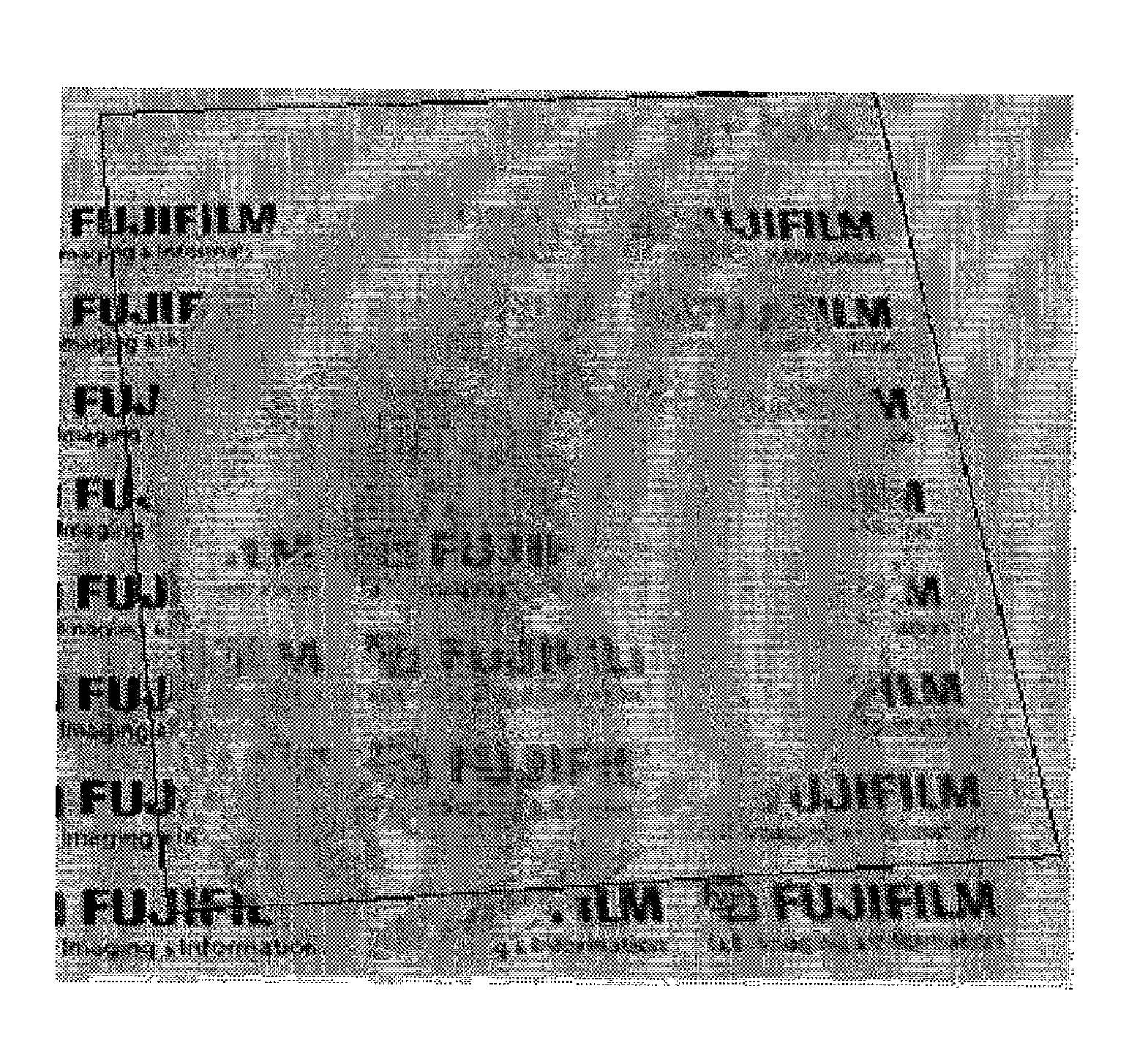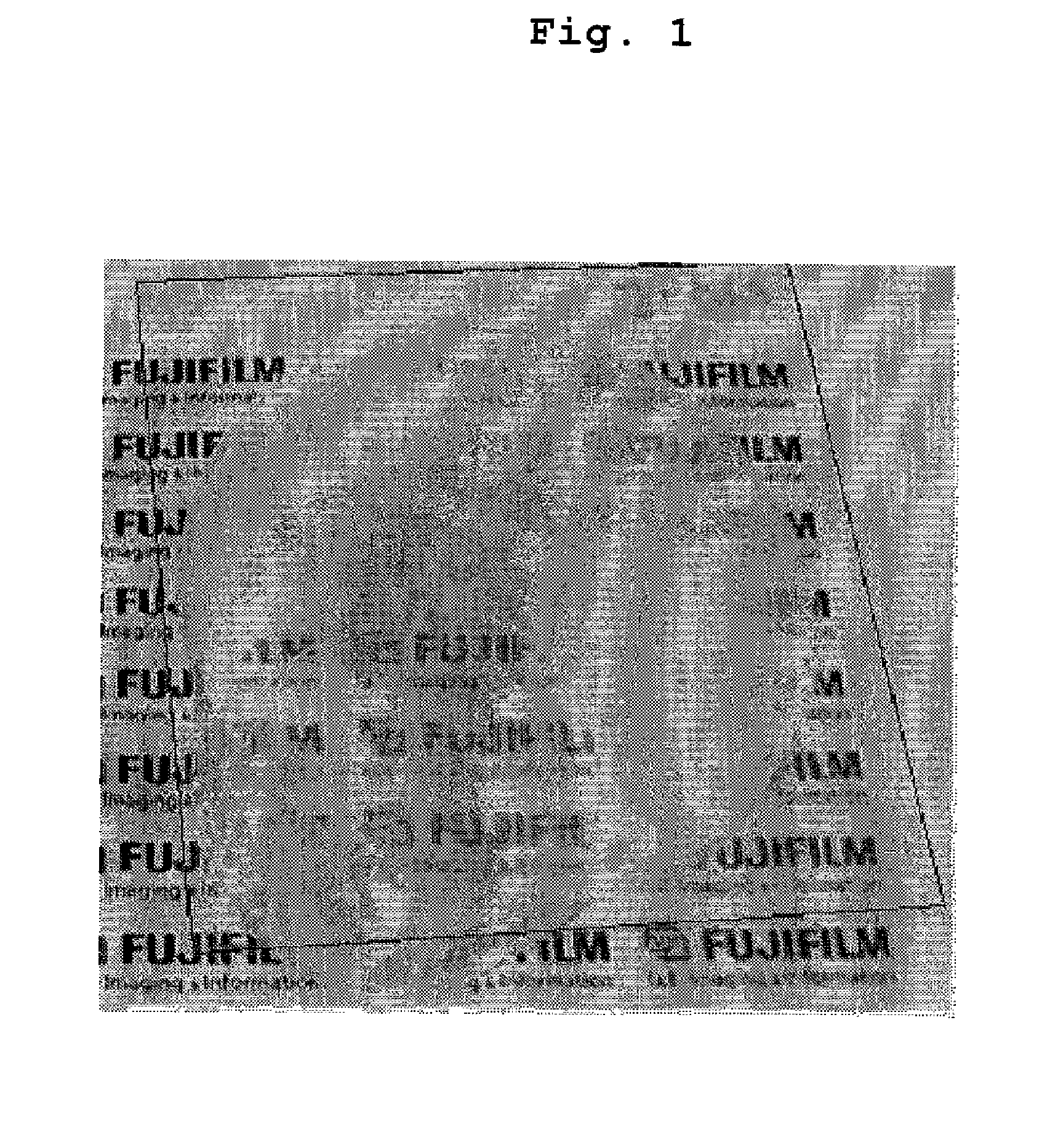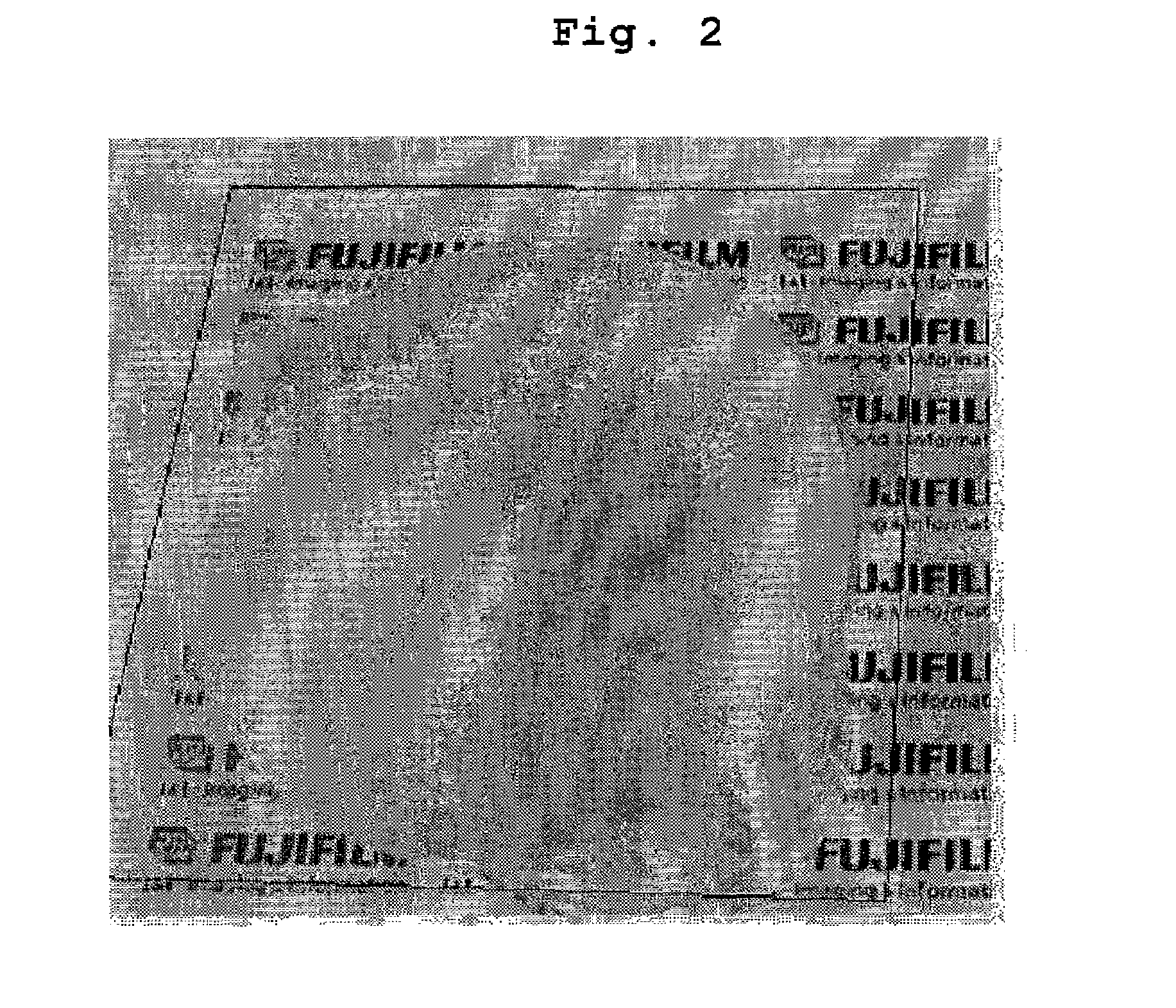Hydrophilic member and process for producing the same
a technology of surface water and hydrophilic components, which is applied in the direction of transportation and packaging, chemical apparatus and processes, coatings, etc., can solve the problems of damage to the transmission of transparent products and members, stains can significantly impair the functions or characteristics of products and members, and are difficult to remove, etc., to achieve excellent wear resistance as well as transparency, anti fog properties, anti stain properties, and weatherability.
- Summary
- Abstract
- Description
- Claims
- Application Information
AI Technical Summary
Benefits of technology
Problems solved by technology
Method used
Image
Examples
example 1
[0136]A 2 mm thick plate of float glass, the most common transparent sheet glass, was subjected to glow discharge treatment to have a hydrophilized surface. A coating composition described below was applied to the hydrophilized surface by means of a bar coater and dried in an oven at 100° C. for 10 minutes to form a hydrophilic layer having a thickness of 1.0 g / m2. The resulting hydrophilic member (i.e., glass with the hydrophilic layer) had a surface free energy of 87 mN / m, proving to have a very highly hydrophilic surface. The hydrophilic layer had a visible light transmittance of 95% as measured with a spectrophotometer U3000 from Hitachi, Ltd.
Formulation of Coating Composition:
[0137]
Colloidal silica 20% dispersion (Snowtex C from100 gNissan Chemical Industries, Ltd.)Sol-gel liquid prepared as follows500 g5% Aqueous solution of anionic surface 30 gactive agent of formula:Purified water450 g
Preparation of Sol Gel Liquid:
[0138]Eight grams of tetramethoxysilane (available from Tokyo...
example 2
[0154]A hydrophilic glass member was produced in the same manner as in Example 1, except that the glass substrate was cleaned by UV ozone treatment and that the coating composition was applied by spin coating to form a hydrophilic layer having a dry thickness of 0.1 g / m2. The resulting hydrophilic member was evaluated in the same manner as in Example 1 to give as good results as in Example 1.
example 3
[0155]A hydrophilic glass member was produced in the same manner as in Example 1, except that the glass substrate was cleaned by UV ozone treatment, coated with the coating composition with a bar coater, spun on a spinner at 200 rpm for 300 seconds, and then dried to form a hydrophilic layer having a dry thickness of 15 g / m2. The resulting hydrophilic member was evaluated in the same manner as in Example 1. As a result of the scratch test, no scratches were left under up to 100 g loading, indicating excellent durability. The results of evaluation were otherwise as good as in Example 1.
PUM
| Property | Measurement | Unit |
|---|---|---|
| surface free energy | aaaaa | aaaaa |
| light transmittance | aaaaa | aaaaa |
| hydrophilic | aaaaa | aaaaa |
Abstract
Description
Claims
Application Information
 Login to view more
Login to view more - R&D Engineer
- R&D Manager
- IP Professional
- Industry Leading Data Capabilities
- Powerful AI technology
- Patent DNA Extraction
Browse by: Latest US Patents, China's latest patents, Technical Efficacy Thesaurus, Application Domain, Technology Topic.
© 2024 PatSnap. All rights reserved.Legal|Privacy policy|Modern Slavery Act Transparency Statement|Sitemap



